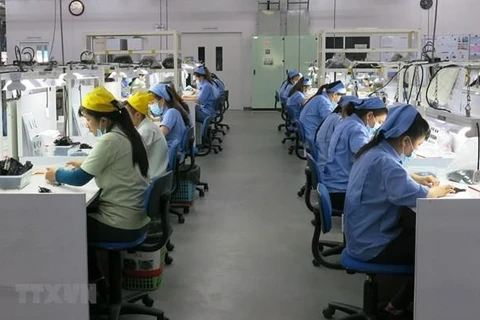Hanoi (VNS/VNA) - The revision of the size of Vietnam’s gross domestic product (GDP) for 2011-2017 is in line with international practices and serves as a foundation for the country's development path in the next 10 years, an official has said.
Chief of the General Statistics Office Nguyen Bich Lam made the statement at a seminar in Hanoi on December 13 to announce the results of the revision of the size of Vietnam’s gross domestic product (GDP) for 2011-2017.
“As Vietnam is developing a 10-year socio-economic development strategy for 2021-30 and a five-year plan for 2021-25, it (the revision) will help the Government address the country’s future path in 5-10 years,” he told the seminar.
Lam announced the revision resulted in an averaged enlargement of 25.4 percent annually of Vietnam’s economy in 2010-2017 compared to previous data, an increase of 935 trillion VND (40.5 billion USD) in GDP per year.
Of the estimates, 2011 witnessed the highest growth rate of 27.3 percent and 2015 saw the lowest at 23.8 percent.
In 2017, the revised GDP size reached 6.29 quadrillion VND, while the previously announced figure was more than 5 quadrillion VND.
According to him, Vietnam’s revised per-capita GDP in 2010-2017 rose by an average of 25.6 percent per year compared to the announced figure, corresponding to an average increase of 10.3 million VND per person.
According to UN Resident Coordinator Kamal Malhotra, in the past decade, Vietnam’s economy had achieved high growth rates and witnessed vast changes in economic structure.
The influx of foreign investment and flourishing information technology had created great potential for domestic enterprises, he said.
GDP revision was a common international practice, he said, adding that the practice included re-basing, new surveys and administrative data, thus better reflecting the scale of GDP.
The revision would assist the Government in the formulation of socio-economic development strategies and help businesses with their plans, he said.
The United Nations Development Programme (UNDP)’s Country Economist Jonathan Pincus said Vietnam needed to constantly update and adjust its GDP, especially the use of statistics to suit the current period.
According to the General Statistics Office (GSO), besides per capita GDP, the revision will also lead to changes in other indicators relative to GDP gross national income, government revenues to GDP, spending deficit to GDP and public debt to GDP.
A revised GDP also changes GDP structure, in which the proportion of industry, construction and service sectors increases while the farming sector’s contribution decreases.
According to the GSO, the re-assessment of Vietnam’s GDP will not affect the country’s growth targets and socio-economic development strategy as the growth rates over the years recorded minor changes.
GSO General Director Lam said the GDP re-assessment was based on methodology recommended by the UN’s statistics division.
The GSO said the review was in line with international practice and not a change in calculation method.
Across the world, most countries conduct regular GDP re-assessments depending on available information, the scope and purpose of the review.
In Vietnam, GDP re-evaluation only takes into account defined economic activities, without including the underground and illegal economy, and is carried out periodically every 5-10 years./.
VNA
























